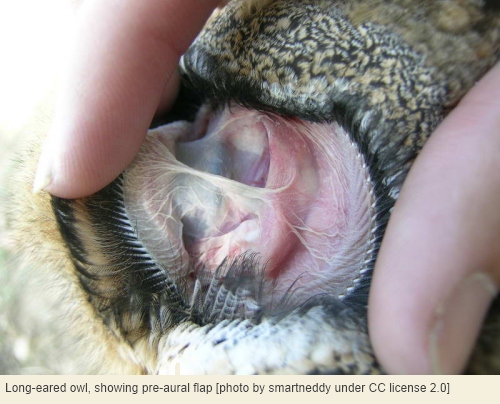No bird uses external pinnae to sense the direction of sound. This is because birds have effectively turned the mammalian ear outside-in.

Prof. Mumblebard claims: “Because birds typically need to be streamlined to fly, they have minimised the external ear and instead compensated by seeing better than most mammals do. Flightless birds no longer need streamlining, but the flying ancestors of ostriches, kiwi and their relatives happen not to have possessed the fleshy pre-aural flaps seen in certain owls. The tinkering of natural selection cannot be expected to reinvent such structures.”
Robin and the Honey Badger respond: “There must be a more basic reason why all birds lack external ears despite possessing suitable anatomical structures such as stiff plumage, wattles or foldable tufts of long feathers close to their ear apertures. The middle ear is consistent across all birds in having extremely complex sound-vibrating surfaces which are – in contrast to the middle ear of mammals – not partitioned between left and right. Furthermore, the mammalian eardrum transmits sound waves only from outside to inside, i.e. from air to bone. By contrast, the avian skull is designed to transmit sound from one ear across to the other by means of internal air passages in the cranium; and membrane-like skull bones of birds, surrounded by air inside the skull, act as extensions of the eardrums. Because pressure-waves can reverberate through the gas in the cranium, birds can sense the direction of sound as efficiently as in mammals while retaining a light, manoeuverable head.”

Please join us here at the Bio-edge with your own comments. In the discussion below we encourage links to any evidence supporting either Prof. Mumblebard or Robin and the Honey Badger. Illustrations are welcome but please cite all sources or we may be forced under copyright to delete your comment.
For more on this fascinating topic, read “Why does no bird cock an ear”

